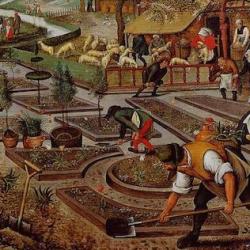American cotton farmers gets billions of dollars in subsidies. This comes from American taxpayers. It is the only way that American farmers, who have the highest production costs in the world, can remain profitable. And it affects the global cotton market in ways that damage lower-cost, smaller producers.
Clyde Prestowitz ( Rogue Nation: American Unilateralism And The Failure Of Good Intentions ) explains (writing in 2003): “Despite its high production costs, America is the world’s largest exporter of cotton, competing in global markets with Mali. West Africa, as a region, is the third largest exporter. The U.S. subsidies assure American farmers that they will earn 70 cents per pound of cotton regardless of the world price . . . . Further, they set no limit on acreage planted. Not surprisingly, U.S. planters harvested a record crop of nearly 10 billion pounds [in 2002], creating a huge glut on the world market that pushed prices far below the break-even mark for most farmers around the world. In short, U.S. subsidies mean that the world’s highest-cost producers dump cotton on world markets and gain a greater and greater market share as they drive the low-cost producers out of business. That isn’t the way capitalism is supposed to work, but that’s how it looks from Mali.”
Prestowitz argues that the farm subsidies undermine American efforts to shore up its foreign policy with economic and development aid, in countries like Muslim-dominated Mali:
Subsidies “undermine U.S. efforts to combat global poverty as a central element in the war on terror. In an attempt to break the cycle of misery and instability that makes the developing world susceptible to hosting terrorist groups, the U.S. government has begun to emphasize development aid and open trade. In Mali, for example, the United States spends $40 million annually on education, health, and other development programs. But that sum is almost totally negated by the state cotton company’s loss of $30 million caused by sinking world cotton prices,” mainly due to U.S. overproduction, due to U.S. subsidies.
As one Malian cotton farmer put it, “It would be better for the United States to pay their farmers not to grow cotton.”














